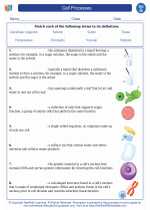Regeneration
Regeneration is the process by which an organism replaces, restores, or grows lost or damaged body parts. This phenomenon is observed in a variety of organisms, from simple single-celled organisms to complex multicellular organisms. Regeneration can occur at the cellular, tissue, or organ level, and it plays a crucial role in the survival and adaptation of many organisms.
Types of Regeneration
There are different types of regeneration observed in nature:
- Epimorphosis: In this type of regeneration, lost or damaged body parts are replaced by the proliferation and differentiation of existing cells at the site of injury. This process often involves the formation of a blastema, a mass of undifferentiated cells that can give rise to new tissues and organs.
- Morphallaxis: This type of regeneration involves the reorganization or remodeling of existing tissues to restore the lost or damaged body parts. It does not involve extensive cell proliferation, but rather the rearrangement of existing cells to achieve the desired structure.
- Budding: Some organisms, such as certain cnidarians and flatworms, can undergo regeneration through budding. This process involves the outgrowth of a new individual from the body of the parent organism.
- Compensatory regeneration: This type of regeneration occurs when the remaining portion of an organ or tissue compensates for the lost or damaged part by growing and remodeling to restore function.
Mechanisms of Regeneration
Regeneration involves complex cellular and molecular processes that vary depending on the organism and the type of regeneration. Some common mechanisms involved in regeneration include:
- Cell proliferation: Regeneration often requires the rapid proliferation of cells at the site of injury to replace the lost or damaged tissues.
- Cell differentiation: The newly formed cells need to differentiate into specific cell types to rebuild the lost or damaged structures.
- Extracellular matrix remodeling: The extracellular matrix, which provides structural support to tissues, undergoes remodeling during regeneration to facilitate the reorganization of cells and tissues.
- Signaling pathways: Various signaling pathways, including those involving growth factors and morphogens, play a critical role in coordinating the regenerative processes.
- Immune response: The immune system contributes to the clearance of damaged tissues and the regulation of inflammation during the regeneration process.
Examples of Regeneration in Organisms
Regeneration is observed in a wide range of organisms, including:
- Planarian flatworms: These organisms are known for their remarkable regenerative abilities, being able to regenerate complete individuals from small body fragments.
- Hydra: Hydra, a small freshwater organism, can regenerate its entire body from just a small piece of tissue.
- Starfish: Starfish can regenerate lost arms, and in some species, a whole new individual can be formed from a single arm and part of the central disc.
- Axolotl: This aquatic salamander is known for its exceptional regenerative capabilities, including the ability to regenerate limbs, spinal cord, and even parts of its brain.
- Humans: While humans have limited regenerative abilities compared to some other organisms, they can still regenerate certain tissues and organs to some extent, such as the liver and skin.
Applications of Regeneration
The study of regeneration has implications for various fields, including:
- Regenerative medicine: Understanding the mechanisms of regeneration can inform the development of new therapies for tissue repair and organ regeneration in humans.
- Biotechnology: Regeneration research may lead to the development of novel approaches for tissue engineering and organ transplantation.
- Ecology and evolution: Regeneration plays a crucial role in the adaptation and survival of organisms in changing environments, and studying regeneration can provide insights into evolutionary processes.
Study Guide
To study the topic of regeneration, consider the following key points:
- Understand the different types of regeneration and the organisms that exhibit regenerative abilities.
- Learn about the cellular and molecular mechanisms involved in regeneration, including cell proliferation, differentiation, and signaling pathways.
- Explore the applications of regeneration in regenerative medicine, biotechnology, and ecology.
- Review specific examples of regenerative processes in different organisms and the specific tissues or organs that can be regenerated.
- Consider the ethical and societal implications of regenerative research and potential applications in the field of medicine.
By understanding the phenomenon of regeneration and its significance, you can gain insights into the remarkable abilities of living organisms to repair and restore their bodies, as well as the potential implications for human health and technology.
.◂Biology Worksheets and Study Guides High School. Cell processes
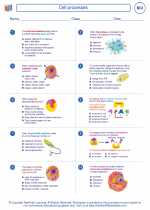
 Worksheet/Answer key
Worksheet/Answer key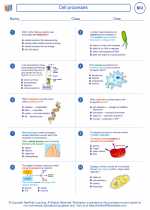
 Worksheet/Answer key
Worksheet/Answer key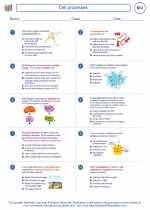
 Vocabulary/Answer key
Vocabulary/Answer key
 Vocabulary/Answer key
Vocabulary/Answer key
 Vocabulary/Answer key
Vocabulary/Answer key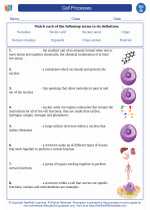
 Vocabulary/Answer key
Vocabulary/Answer key
 Vocabulary/Answer key
Vocabulary/Answer key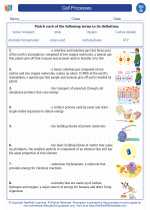
 Vocabulary/Answer key
Vocabulary/Answer key
 Vocabulary/Answer key
Vocabulary/Answer key